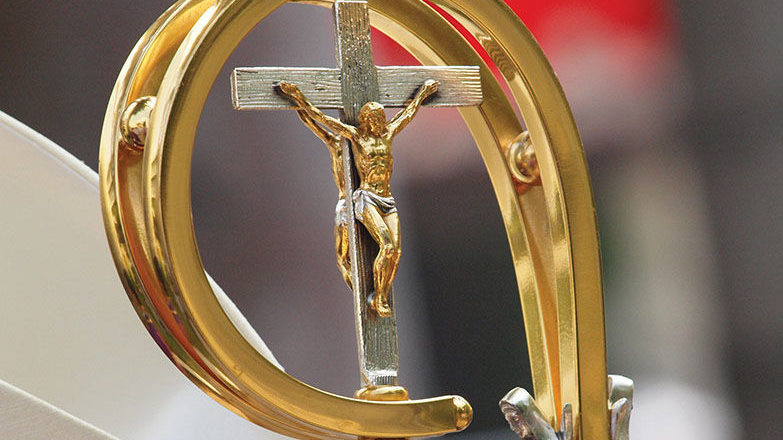The process of selecting an auxiliary bishop is careful, confidential and far from instant — a process that literally takes years, beginning well before there is even a need. As Los Angeles received its three new auxiliary bishops Sept. 8, here is a look at the selection process.
Who is qualified?
According to Canon Law (Can. 378), a “suitable” candidate for the office of bishop must be “outstanding in strong faith, good morals, piety, zeal for souls, wisdom, prudence and human virtues and possess those other gifts which equip him to fulfill the office in question.”
Additionally, a candidate must be “held in good esteem,” a priest ordained at least five years, and at least 35 years old (Father Timothy Manning was a month shy of his 37th birthday when he was ordained an auxiliary bishop for Los Angeles in October 1946).
Finally, the candidate should hold a doctorate or at least a licentiate in sacred Scripture, theology or canon law from an institute of higher studies approved by the apostolic see, “or at least be well versed in these disciplines.”
Candidates for auxiliary bishop represent a diversity of experiences. Over the years, those appointed as Los Angeles auxiliary bishops have included priests who have served primarily as parish priests; in administrative leadership; and, on occasion, in different dioceses or in religious orders.
What determines need?
“When the pastoral needs of the diocese require it, one or more auxiliary bishops are to be appointed at the request of the diocesan bishop,” states Canon 403. Such “pastoral needs” generally involve a diocese’s growing population and/or changing demographics.
Approval for an auxiliary bishop, or an additional auxiliary bishop, must come from the Congregation of Bishops in Rome. Once the congregation determines that a certain diocese deserves a certain number of auxiliary bishops, permission is usually no longer required in order to replace a bishop who leaves that post (through death, retirement or reassignment).
What is the actual process?
It begins in annual provincial meetings, at which proposed lists of candidates for the office of bishop in the various dioceses are discussed among the diocesan bishops of the ecclesial province, even if there is no current need or vacancy. The Los Angeles province includes the Archdiocese of L.A. and Dioceses of Fresno, Monterey, Orange, San Bernardino and San Diego. Such must take place no less frequently than every three years.
Many bishops, on a regular (even annual) basis, consult with their priests (via confidential questionnaire) to get their input on possible candidates, who may or may not be priests of that particular diocese. These lists are then sent to the papal nuncio in Washington, D.C.
When there is an actual need, the process becomes more urgent. The bishop (and his auxiliary bishops) propose a list of three candidates, known as a “terna,” to the papal nuncio, who then, via a fairly detailed and very confidential questionnaire (as per Canon 377), consults with priests and lay leaders of the diocese on these candidates. There is also consultation with the local bishop on the diocesan needs.
From that input — designed to assess each candidate’s human qualities, pastoral experiences, leadership capabilities and overall suitability — the nuncio proposes his own terna for vacancies to the Congregation of Bishops. The nuncio’s terna may or may not be the same as the terna proposed by the diocesan bishop (or archdiocesan archbishop, as the case may be).
In Rome, the congregation does a preliminary review of the candidates, after which the congregation may have questions or require more information on one or more of the candidates. The congregation could also reject the list and ask the diocese for a new one, a reason the process can go on for a while.
Once the congregation has approved the terna, a cardinal is given the task of presenting it to a session of cardinals. After discussion, the congregation can further change the order before making its recommendation.
At that point, the list goes to the pope, who can accept the recommendation, change the order or ask for a new list. Again, this can take months.
Normally, in the case of auxiliary bishops, the pope will agree to the recommendation of the congregation. The Holy Father is more likely to be more involved in the selection process for the head of a diocese, especially a larger archdiocese from where a cardinal might be appointed. The nuncio’s questionnaire for heads of dioceses is likewise more exhaustive than for an auxiliary bishop.
When the pope has approved the choice, the nuncio is notified, who then contacts the priest(s) selected to obtain his (their) consent, and establish a date for publication of the announcement.

